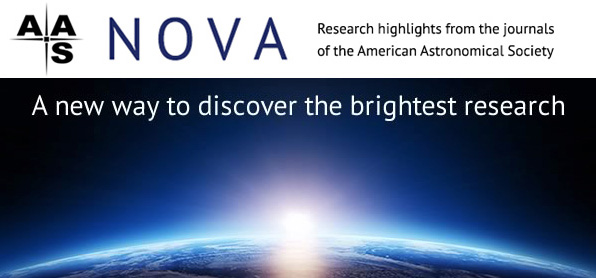Highlights from AAS Nova: 11-24 February 2018

Susanna Kohler American Astronomical Society (AAS)
AAS Nova provides brief highlights of recently published articles from the AAS journals, i.e., The Astronomical Journal (AJ) and The Astrophysical Journal (ApJ), ApJ Letters, and ApJ Supplements. The website's intent is to gain broader exposure for AAS authors and to provide astronomy researchers and enthusiasts with summaries of recent, interesting research across a wide range of astronomical fields.
The following are the AAS Nova highlights from the past two weeks; follow the links to read more, or visit the AAS Nova webpage for more posts.
23 February 2018
Our Galactic Neighbor Hosts Complex Organic Molecules
The low-metallicity environment of the Large Magellanic Cloud doesn’t deter the formation of complex organic molecules.
21 February 2018
Driving Jets from the Sun
What launches powerful eruptions from the Sun’s surface? New simulations explore how reconfiguring magnetic fields can lead to explosions of energy.
20 February 2018
Can We Detect Exo-Seasons?
Astrobites explores whether we’ll be able to observe seasons on warm-Jupiter exoplanets with the James Webb Space Telescope.
19 February 2018
Featured Image: A Dwarf Galaxy with an Active Nucleus
Hubble reveals a detailed look at the dwarf galaxy hosting the smallest active supermassive black hole known.
16 February 2018
An Eccentric Planet Skims a Giant Star
Scientists have discovered the most eccentric planet known to orbit a giant star.
14 February 2018
Galactic Pairs in the Early Universe
In the spirit of Valentine’s Day, today we’ll be exploring apparent pairs of galaxies in the distant, early universe.
13 February 2018
GW170817: The X-Ray Emission Did What?
Astrobites reports on what we’ve learned from X-ray observations of the momentous neutron-star merger GW170817.
12 February 2018
Are We Really Missing Small Galaxies?
We observe far fewer small galaxies than current theory predicts. Are these galaxies actually missing, or is this a problem of interpretation?


